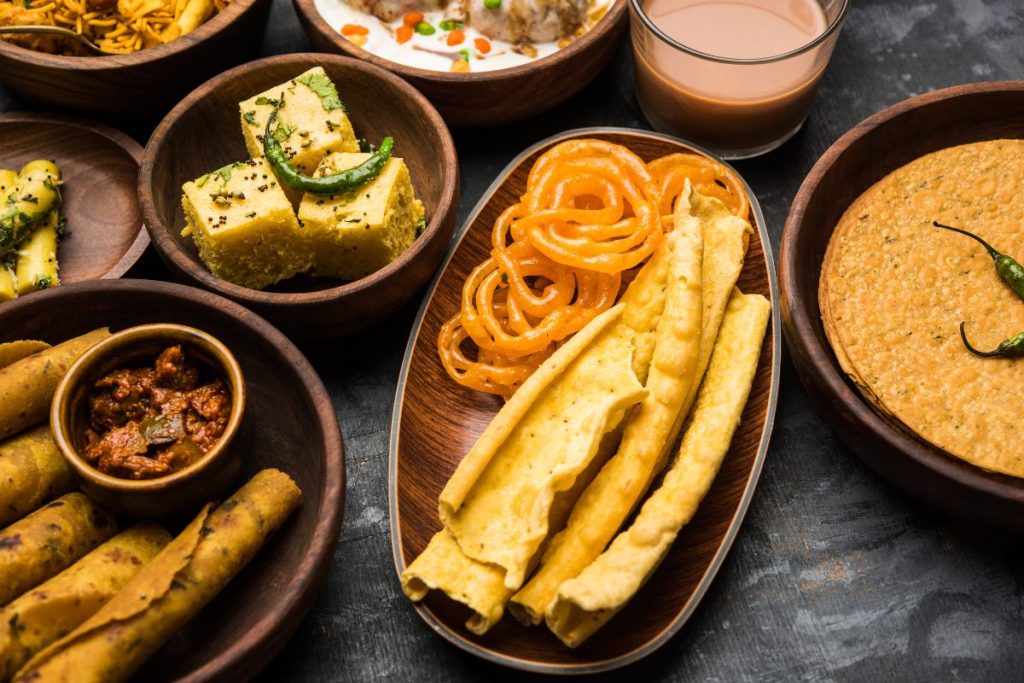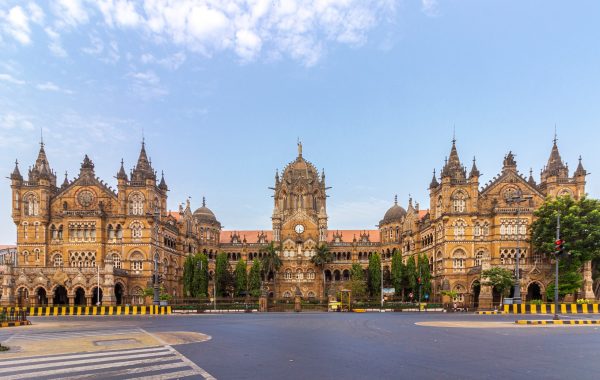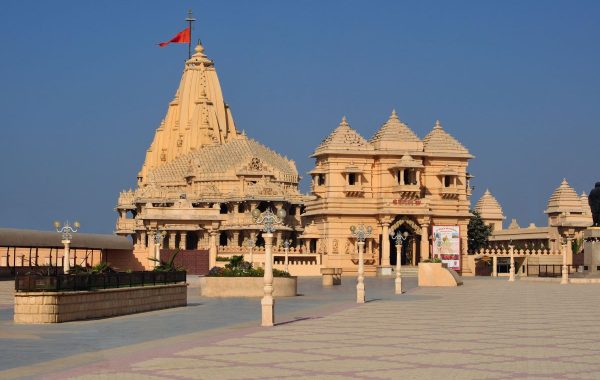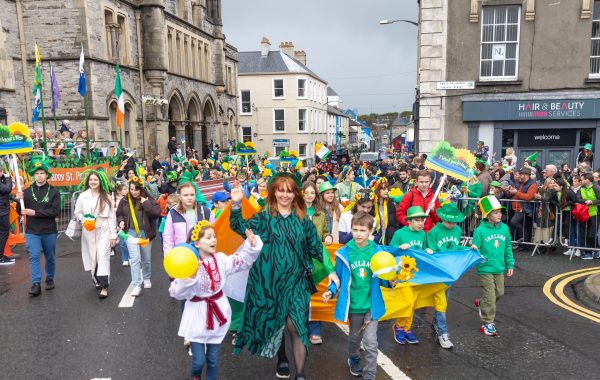Your Ultimate Guide to Must-Try Dishes and Dining Spots in Gujarat’s Culinary Capital.
Surat, situated in the western Indian state of Gujarat, is not only a vibrant diamond-polishing and textile hub but also an epicenter of lip-smacking delicacies. If you find yourself wandering the streets of this historic city, here’s a culinary map to ensure you don’t miss out on any of its gastronomic treasures.
Dhokla, Khaman, and Lacho at Gopal Khaman House
Dhokla is typically paired with a lively, sun-kissed yellow chutney crafted from raw papaya blended with turmeric, mustard, and lime juice. Just as Punjab is synonymous with butter chicken and Bengal with hilsa, Gujarat takes pride in its Dhokla. This quaint eatery offers a delightful twist on the classic dhokla. Known as khaman, it’s made by immersing channa dal for hours, then grounding it into a creamy consistency before allowing fermentation. Once spiced and blended with soda bicarbonate, the mixture undergoes steaming. The secret to its unique taste and texture? The precise steaming duration and intensity, a well-kept culinary mystery.
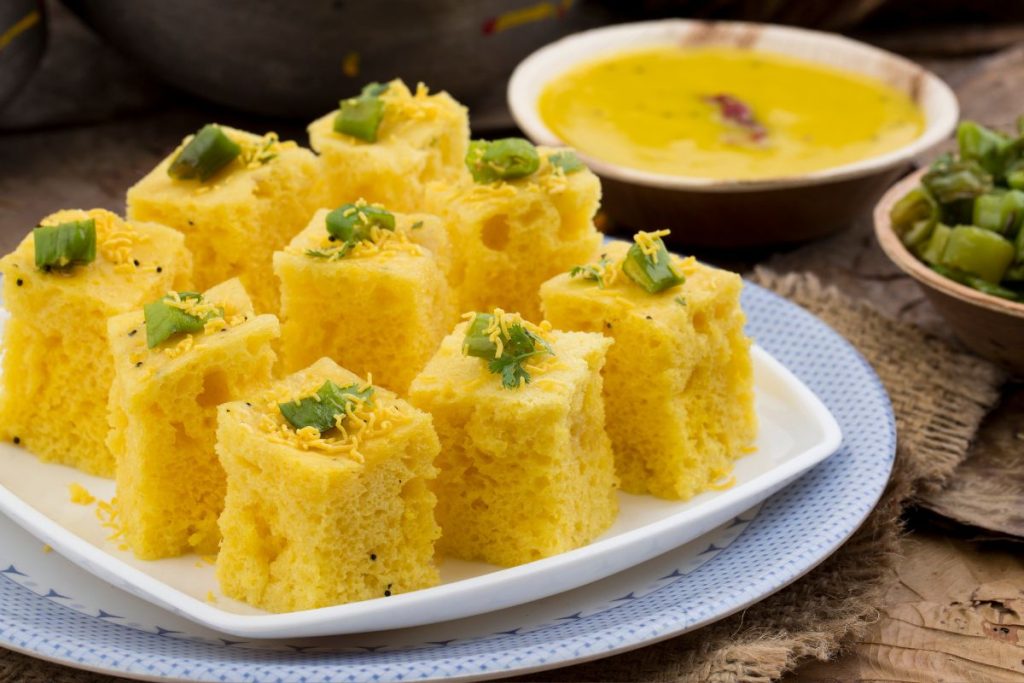
Khaman boasts a lighter hue and a fluffier texture compared to dhokla and is adorned with a variety of toppings. Gopal Khaman House, echoing many establishments in Surat, serves khaman dhokla embellished with choices of cheese, butter, or crispy green garlic.
Locho, humorously termed in Gujarati to mean botched up, has a thick, paste-like consistency, making it denser than khaman. Gopalbhai, the owner, mentions its creation was unintentional, stemming from a steaming mishap. Its compacted nature, reminiscent of a sunken cake, intensifies its flavor, earning it a regular spot on Surat’s culinary offerings.
Ponk/Paunk in Ponk market at Adajan: In the Ponk market at Adajan, you’ll discover Ponk/Paunk, a cherished winter treat made from roasting the green winter millet known as jowar. This crop thrives in the nutrient-rich region of Hazira, located west of Surat, nestled between the Tapti delta and the Arabian Sea. Harvested bundles of this millet are transported to a processing zone by the Tapti river, beneath the iconic Sardar Bridge in Adajan. Initially, these sheaves undergo a gentle roasting in traditional mud ovens called bhattis. Subsequently, they’re enveloped in rugged fabric and threshed with wooden rods to extract the grain. In a harmonious display of tradition, clusters of women separate the grains from their husks right in front of the ponk-selling stalls. Directly across, Sev stalls captivate visitors with their aromatic, thin gram flour noodles, seasoned with garlic, pepper, and chili, crisping away in cottonseed oil.
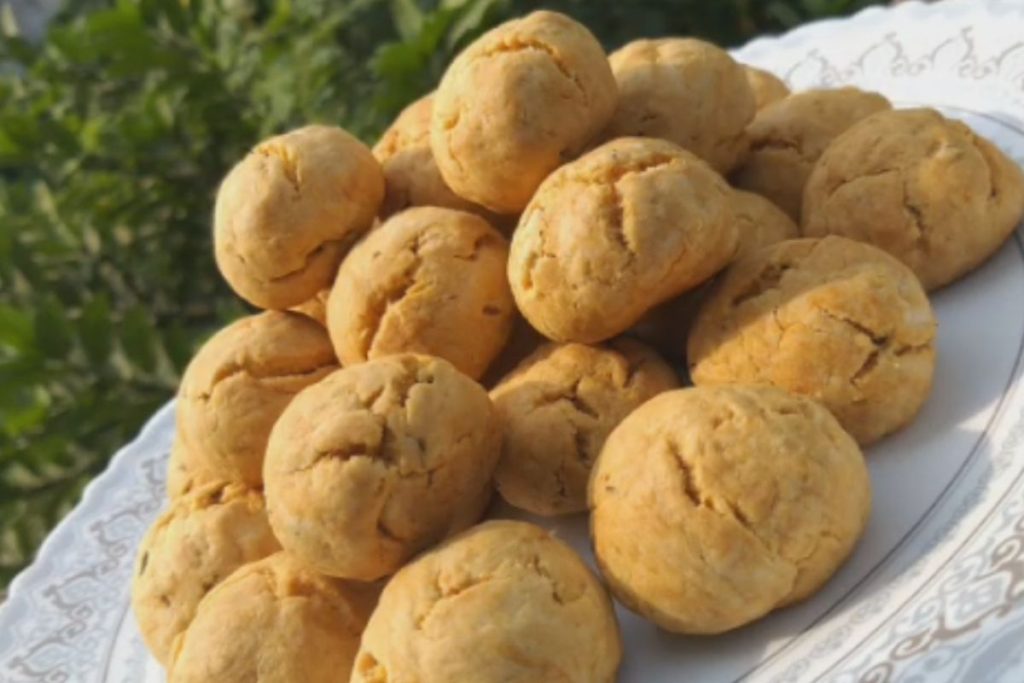
Batasa from Dotivala Bakers and Confectioners: The Tapti river has historically been Surat’s arterial waterway, attracting trading ventures from the Dutch, French, Portuguese, English, and even Swedes along its embankments. In the 1700s, the Dutch settled by the Tapti’s shores near the Nanpura region, establishing the foundations for what’s known today as Dutch Road. They enlisted the skills of five Parsi bakers to produce bread. As the Dutch concluded their East India ventures, the bread-making ovens were entrusted to Faramji Pestonji Dotivala. He persisted in baking for the foreign community, and the crisped remnants of the bread were introduced to the locals, eventually gaining fame as biscuits. This dough later evolved with the addition of shortening and ghee, giving birth to the acclaimed Surti batasa. Remarkably, Dotivala Bakers and Confectioners remains anchored to its original location since 1775, now helmed by its sixth family generation. Their array of cakes, authentic ghee nankhatais, and buttery batasas stand as Surat’s gastronomic hallmarks.
Begumpura’s Meaty Delights: For those inclined towards egg-based dishes, the street vendors of Begumpura have crafted an array of specialties. Among the favorites is ghotalo, a fusion of boiled, scrambled, and omelet-style eggs, with the magic lying in its unique masala blend. An apt place to indulge is the Ganesh Egg Stall.
Before Mumbai rose to prominence as the west’s chief port, Surat was the departure point for Hajj pilgrims across India. This constant stream likely spurred the emergence of meat vendors in Begumpura’s Zampa Bazaar. The narrow lanes teem with barbecue joints, illuminated by soft-glowing bulbs, showcasing poultry drenched in a vibrant orange marinade. The wafting scent of barrel-ovens hints at sizzling meats and freshly baked rotis. Notably, a must-try is the deep-fried Rangooni paratha, brimming with minced meat. The dish traces its origins to Rander, situated along the Tapti’s northern banks. Historically, merchants voyaged from Rander’s ports to remote destinations, including Burma. Their returns were marked with precious Burma teak, occasionally still found as antiques in Rander, and an acquired taste for Rangooni paratha and khow suey, a Burmese noodle delicacy from the Shan state. Come Ramzan, and Rander becomes the hub for these mouthwatering treats.
At Dumas, a port just 21 kilometers from the heart of Surat, you’ll find the renowned Lashkari tomato bhajiya. These deep-fried tomato delicacies, dipped in besan and drizzled with a unique chutney.
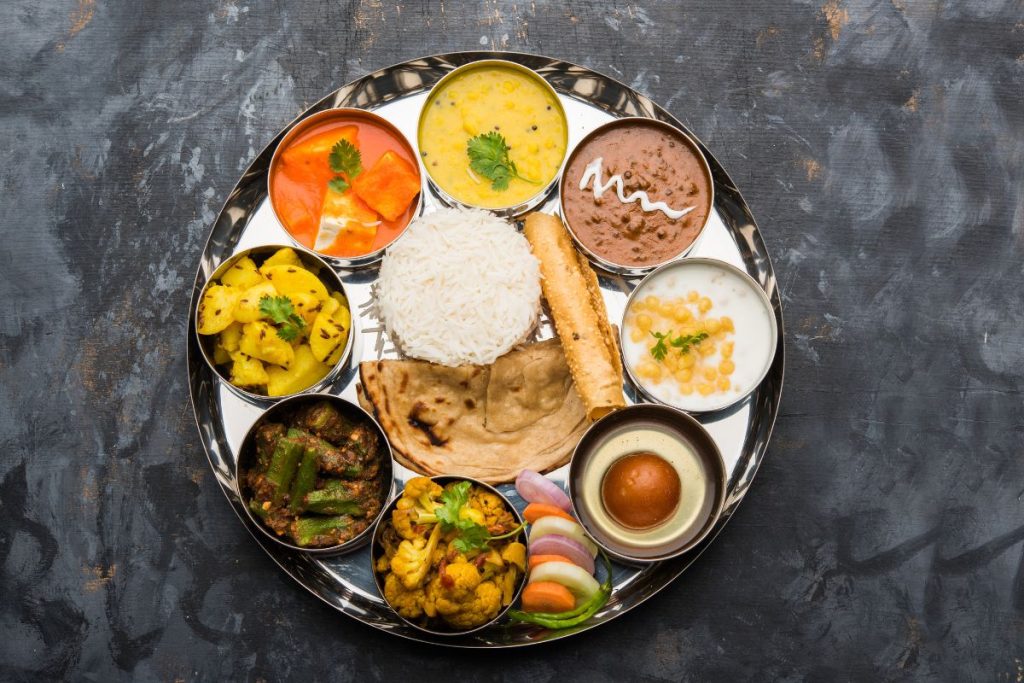
Thali at The Gateway Hotel: At The Gateway Hotel, indulge in a sumptuous Thali available for lunch from Monday to Saturday. Prepared by local Surti housewives, this thali boasts authentic regional flavors, most notably the delectable undhiyu. This traditional winter feast combines ingredients like papdi (broad beans), potatoes, sweet potatoes, kand (purple yam), ariya kakdi (seedless cucumbers), brinjal, and skin-on Rajagiri bananas. It’s spiced to perfection with green garlic, chillies, coconut, and coriander.
Ghari: For dessert enthusiasts, the Ghari is an unmissable treat from Surat. Crafted in the 1900s by Shah Jamnadas Chauta Ghariwala, its foundation is the rich mawa (concentrated milk solids). Having graced Chauta Bazaar since its inception in 1899, the shop’s iconic kesar-badam-pista ghari is a delightful concoction dripping in ghee and packed with flavor. Additionally, their renowned kesar suttarfeni (also known as buddhi na bal) and the doodhi halwa, made from a local gourd, are worth savoring.
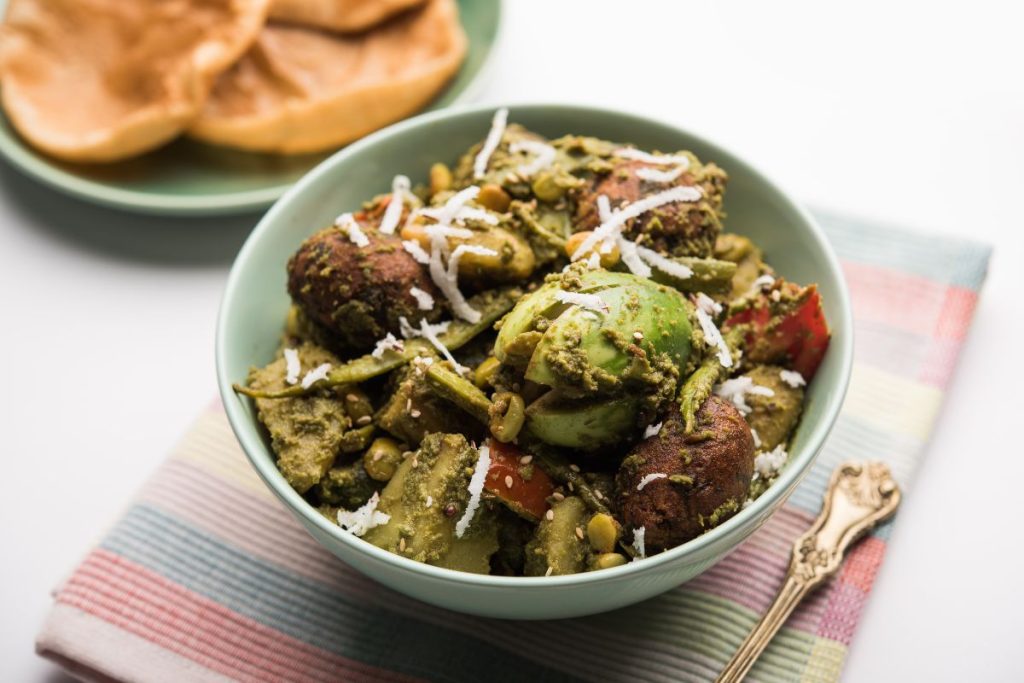
Venturing through the bustling streets of Surat, you’ll find a plethora of vendors, eateries, and restaurants offering these culinary wonders. These dishes not only satiate your taste buds but also offer a glimpse into the rich cultural tapestry of the region. So, whether you’re a food adventurer or someone who just loves to indulge in local cuisine, Surat promises a delightful gastronomic journey. Don’t forget to pack your appetite!
For latest travel news and updates, food and drink journeys, restaurant features, and more, like us on Facebook or follow us on Instagram. Read more on Travel and Food Network
Trending on TFN
A Spanish Odyssey: Trafalgar’s Unparalleled Best of Spain Itinerary
Imperial Splendors: Trafalgar’s 10-Day Sojourn in Prague, Vienna, and Budapest


